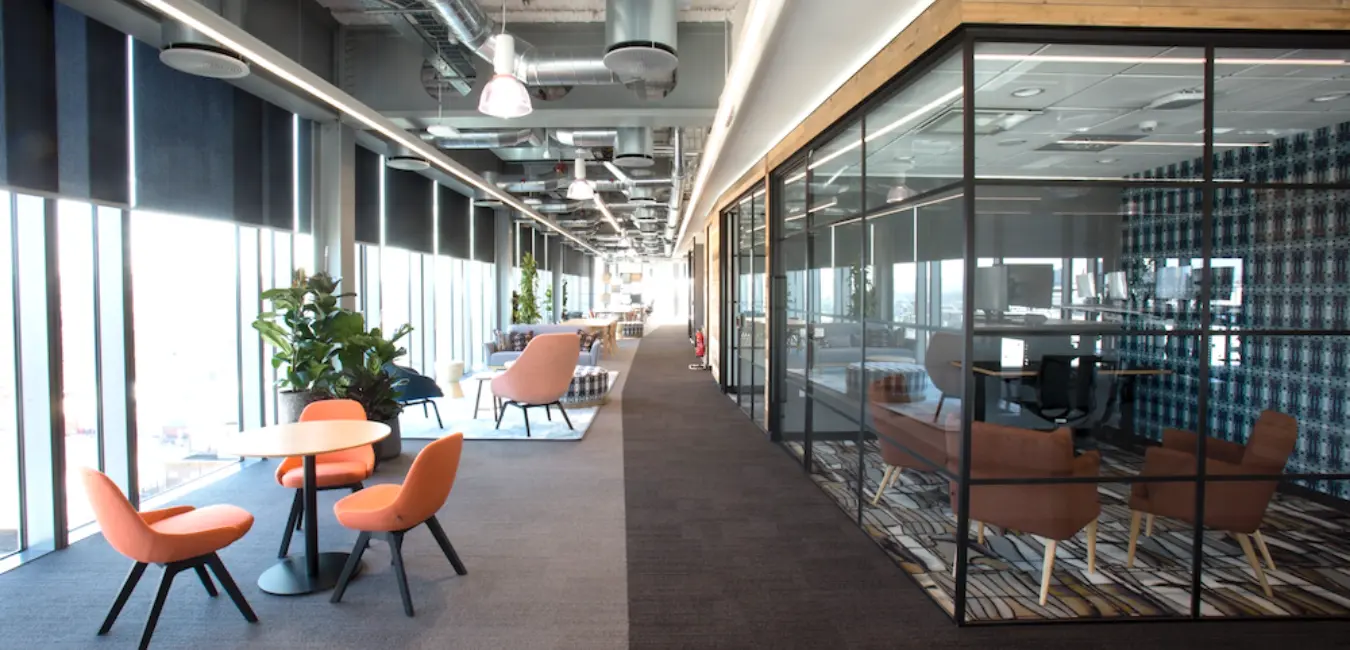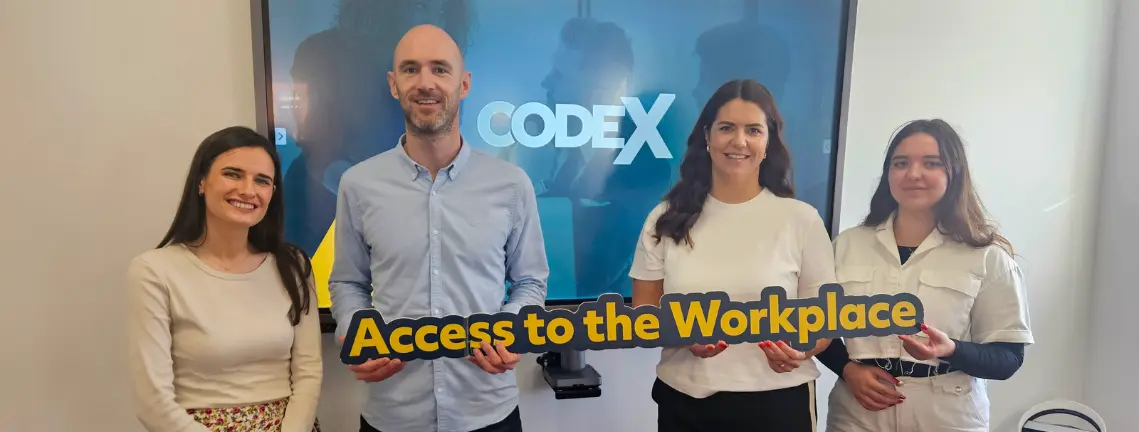How to Create a Neuroinclusive Workplace


The workplace is an incredibly diverse environment. Each employee is distinct, with their life experiences, interests, and neurological makeup influencing how they like to work and complete tasks. Because of diversity, great things happen in the workplace, and organisations are becoming increasingly proactive in providing support as they recognise the positive aspects diversity brings.
Yet, although neuro-minorities make up an estimated 4% of the population in Ireland and at least 15% to 20% of the global population, diversity, equity, and inclusion programmes seldom mention them. Similarly, many organisations have yet to consider neurodiversity when designing the layout of their office spaces.
Ireland’s organisations are becoming better at adapting to and recognising the fundamental benefit of neuroinclusion, however. Corporations like Microsoft and Hewlett Packard Enterprises, which have HQs in Ireland, have well-documented how they leverage a neurodivergent workforce. However, there is still a long way to go; according to the latest research stats, 51% of neurodivergent employees are willing to quit their jobs as they do not feel supported by their employers.
What Does 'Neurodiversity' Mean?
The term neurodiversity was introduced in the late 1990s and stemmed from a desire to highlight that there are many ways to think, learn, socialise, and process information. While some individuals are considered neurodivergent - meaning they have cognitive differences - we, as a human species, are all neurodiverse because no two brains are exactly alike. Embracing neurodiversity in the workplace means recognising and valuing these differences, creating an environment where everyone can thrive.
What Does Neurodivergence Mean?
Neurodivergence refers to the natural differences in how people think, learn, and process information. It includes a range of cognitive variations, such as Autism, ADHD, Dyslexia, Dyspraxia, and others. Rather than being a limitation, neurodivergence brings diverse perspectives, creativity, and problem-solving skills to the workplace. By understanding and embracing these differences, businesses can create a more inclusive environment where all employees feel valued and supported.
What Does Neurodivergent Mean?
The term neurodivergent refers to individuals whose brains function differently from what is considered "typical." Rather than viewing these differences as deficits, neurodivergence recognises them as natural variations in how people think, learn, and process information. A neuroinclusive workplace embraces these differences by creating an environment where everyone, regardless of how their brain works, can thrive and contribute their unique strengths.

This “Neurodivergent Umbrella” was created by Sonny Jane Wise.
The umbrella term neurodivergence includes several different types, as shown in the graphic above created by Sonny Jane Wise.
Recognising the variety of cognition is the first step towards comprehending neurodivergence. Although each has its distinctive qualities, neurodivergent people typically see settings in ways that are different from those of neurotypical people.
What Does Neurotypical Mean?
The term neurotypical refers to individuals whose brain functions, behaviours, and cognitive abilities align with what is considered typical or standard in society. It is often used in contrast to neurodivergent, a term that includes conditions such as Autism. While being neurotypical means thinking and processing information in a way that most people do, it’s important to recognise and appreciate the diverse ways in which all brains function.
How to Support Neuroinclusion in the Workplace
Neuroinclusive office design has become imperative since the “great return” to the workplace. Working environments can be incredibly challenging for neurodivergent employees, especially when returning to crowded, noisy offices after working at home for two or more years. Neurodivergent people who are more sensitive to their physical environment can be likelier than neurotypical people to feel sensory overwhelmed brought on by their surroundings, making it difficult to concentrate, collaborate confidently, or relax.
Today's neurodivergent workforce proves that the human brain can function in various ways, and the workplace must adapt. However, many organisations are slow to do so. New research conducted by City & Guides and neuroinclusion experts Do-IT Solutions found that employers currently fail to support neurodivergent employees, with 40% of neurodivergent employees feeling impacted almost daily by their condition due to a lack of training, awareness, and resources in the workplace.
However, making steps towards improving the neuroinclusivity of your company doesn’t need to mean a complete office overhaul. You can start by looking at ensuring that your company is looking at
ED&I is a fundamental organisational value, and neuroinclusion should be incorporated into regular diversity training to encourage employees to speak up about what they want from the office's layout and communication.
Designing a Neuroinclusive Workplace – Where to Begin
Understanding and accommodating neuro-differences involves knowing what to include when designing a neuroinclusive workplace. In terms of the office design itself, the impact of space design on the five senses is well documented. Colours, textures, acoustics, smells, temperature... everything has the potential to negatively affect a person's productivity and wellbeing.
While most organisations cannot design for individual requirements, they can combine a spectrum of needs with a range of spaces so that every individual can work as effectively and efficiently as possible. CIPD Ireland’s guide raises awareness among employers of neurodivergent individuals and what to consider when creating a neurodivergent-friendly workplace.
Components of a Neuroinclusive Office Space
Minimising the appearance of difference within the office, here are some essentials when designing a neuroinclusive office:
- Low-stimulation environments for hyper-focus.
- Social spaces for stimulation breaks.
- Quiet rooms for intense concentration or a moment of relaxation.
- Low-traffic areas to reduce social anxiety.
- Collaborative hubs to foster extraversion.
- Active zones to stimulate movement.
- Materiality and lighting to cue behaviours.
- Layout and furniture to indicate the purpose.
These and more features can be added to an office that helps remove the daily challenges many neurodivergent employees face.
What to Consider When Designing a Neuroinclusive Workplace
To reflect how employees interact with the physical environment, organisations should consider the following in the design of their office space:
1. Provide Workspace Options
Provide distinct environments where people can go based on their work and level of comfort with their surroundings. Neurodivergent employees and guests frequently perceive noises, images, and smells differently than other staff members. While expanded collaboration spaces are one of the main features businesses seek in new office designs, research demonstrates that privacy can be just as crucial.
Offering a variety of purposeful spaces, like quiet spots for focused work, and high-stimuli locations, such as breakout areas for group work and socialising, is the best approach to accommodate the many ways people operate. Breakout areas could be a private, dimly lit space with a comfy couch or chair, soothing music, and a yoga mat to promote restorative movement or meditation. Whatever the method, make sure to include clear design clues about the space's purpose so visitors understand what to expect regarding acoustics, seclusion, light, and other sensory factors.
Also, remember that some people may find loud or sudden noises disrupting. It is helpful to create quieter collaboration areas that use furniture and plants to bring privacy within a larger open space and shield employees from the distraction of passing conversations, in addition to providing small focus rooms with soundproofing materials where people can trust their discussions will be private.

2. Review the Effectiveness of Light and Sound
Many neurodivergent people are sensitive to bright, flickering, artificial lighting, glare, and abrupt movement, especially those with ADHD. More natural light can improve everyone's concentration and mental health throughout the room, including smaller, private areas and common ones. Not every room will have windows that let in natural light, so in those cases, mirrors, glossy surfaces, bright furniture, plants, warm, soft LED lighting with adjustable settings, lighter colour schemes, or even a fake skylight can assist in creating the sense of natural light. Simple pattern artwork and dimmable lighting can make the individual feel more comfortable.
This also applies to collaboration areas frequently designed with vibrant lighting and colours. Bright colours and lights can stimulate some people's brains but are immensely distracting for others. So, provide various options throughout the office to ensure you cater to everyone’s preferences.

3. Value High-Quality Air
Nobody likes stuffy air with lingering strange scents, but those with neurogenetic sensitivity may find it particularly bothersome. Hyperosmia is a term for a specific sensitivity to smell. Depending on its severity, a co-worker’s perfume or a strong-smelling lunch can cause migraines, nausea, and other unpleasant symptoms. For instance, specific neurodivergent individuals, such as those with Autism, have enhanced senses of taste and smell.
It can be difficult for someone with hyperosmia to determine which smells cause an attack. People with acute smell sensitivity may feel anxious as they are unaware of what events or places are safe for them to attend. As a result, employees returning to the workplace for the first time in two years may experience anxiety when they step into a new, uncertain sensory environment.

4. Choose Comfortable Furnishings
Uninviting desk chairs will not win over any employees, especially neurodivergent employees. Examine the texture of office desks, chairs, and other high-touch surfaces like you would the aesthetics. Invest in good quality office chairs and seating to make your office space more comfortable and professional. Ergonomic chairs are designed to support the body, promote good posture, and prevent discomfort, making them the ideal choice for office chairs.
Think about methods to make employees feel more at home. Different furniture arrangements can also make people more prepared to perform their jobs. For instance, not everyone's brain functions well while seated at a table, so designate a location where standing desks are available. There are also ways to provide privacy in open workspaces, such as by turning workstations so they face outward and away from other people.

5. Consider Neuroinclusion in Wayfinding and Office Layout
In offices with uniform décor, it can be easy to get lost. Employees with cognitive impairments may become overwhelmed by this feeling of confusion. For instance, it can be irritating for someone with dyslexia to rely more on environmental cues than signage to locate a space - only to discover that those cues all appear to be the same. If there are more distinctive locations with visual cues and clear lines of sight, everyone can map their place inside the area, eventually saving time and irritation.

Neuroinclusion - The Power to Choose
Gaining the input of your neurodivergent employees is vital when creating an office space because they will most likely have a thorough awareness of their working methods.
Designing adaptable and flexible workspaces demonstrates an organisation's support for all employees, regardless of their background. These requirements may be minor, such as requiring dimmable lighting in conference rooms and quiet areas, but it is crucial to remember that employees are used to having freedom of choice when working remotely, so they should not have to give it up when they frequently return to the office.
---
At Codex, our company values are central. We constantly incorporate ED&I initiatives into our culture and processes to create an environment where employees and partners feel valued and respected.
Our team of office design experts would love to help you create a neuroinclusive office that champions inclusivity. From initial concept to installation, we offer a complete office fit-out service that includes space design and furniture allocation to office supplies. Open an account today or contact us at sales@codexltd.com if you require further information!
RELATED ARTICLES:
Latest Posts

Codex Unveils Thrive Collection at Autism-Europe Congress
Codex launched its Thrive by Codex x AsIAm neuroinclusive workplace collection at the 14th Autism-Europe Congress in Dublin. The range features Balance Booths, Privacy Seating, and Movement Chairs, designed to help employers create inclusive work environments.

Codex Celebrates Its Third Annual Environment Week
This year’s Environment Week focused on Zero Waste, featuring Planet Mark, Thorntons Recycling, electric fleet updates, and the launch of the Codex Cares Repair Station, focusing on driving sustainability at work and at home.
STAY IN TOUCH
Trending Posts
Codex Unveils Thrive Collection at Autism-Europe Congress
Codex launched its Thrive by Codex x AsIAm neuroinclusive workplace collection at the 14th Autism-Europe Congress in Dublin. The range features Balance Booths, Privacy Seating, and Movement Chairs, designed to help employers create inclusive work environments.





